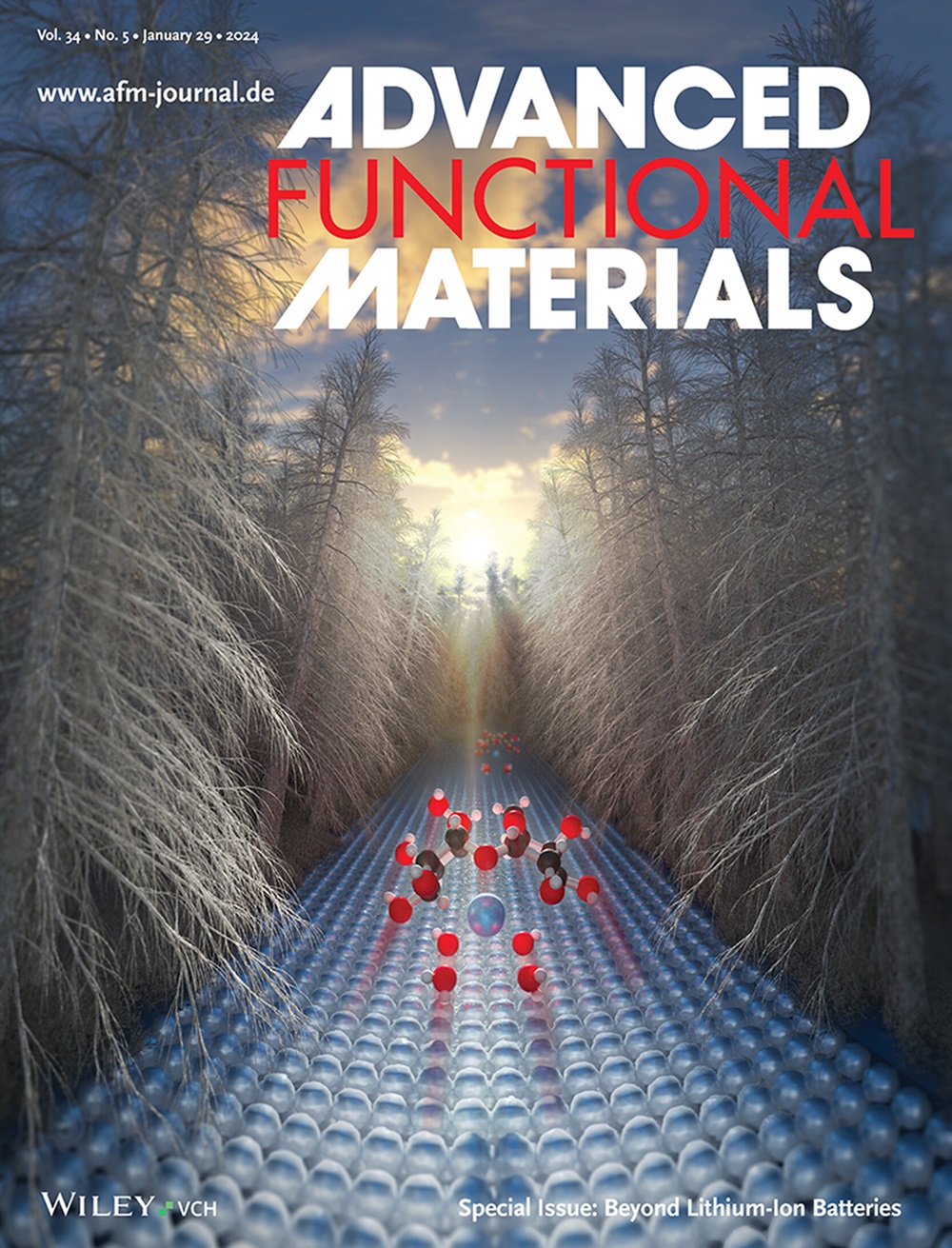Built-In Electric Field in 2D/2D LDH/Antimonene Heterostructure to Induce Stable β-NiOOH at Ultralow Potential for Cost-Effective Water Electrolysis
IF 19
1区 材料科学
Q1 CHEMISTRY, MULTIDISCIPLINARY
引用次数: 0
Abstract
NiFe-LDH is regarded as one of the most efficient oxygen evolution catalysts, with the catalytic activity stems from the in-situ formation of NiOOH active phase induced by anodic polarization. In the reaction, NiFe-LDH initially reconstitutes into highly active β-NiOOH phase, which is difficult to initiate and stabilize at low potential, and will be irreversibly transformed into less activity γ-NiOOH phase due to over-oxidation. In this work, a novel built-in electric field (BEF)-driven surface reconstruction strategy is proposed to reduce the potential required for β-NiOOH formation and prevent its over-oxidation. This is demonstrated in a two-dimensional NiFe-LDH/Antimonene (2D/2D NiFe-LDH/AMNSs) heterostructure catalyst, where a strong BEF is generated through work function engineering. Kelvin probe force microscopy (KPFM) tests, in-situ Raman spectra and theoretical calculations confirm that the BEF enhances electron transfer at the NiFe-LDH/AMNSs interface, creating a local potential that reduced the applied potential by 80 mV for formation of β-NiOOH from NiFe-LDH. Consequently, a record-low overpotentials of 144 and 209 mV are achieved at 10 and 300 mA cm−2 for oxygen evolution reaction (OER), making it the best-performing NiFe-LDH based catalysts to date. It also demonstrates excellent durability and hydrogen evolution reaction (HER) activity, making it ideal for overall water splitting.二维/二维 LDH/Antimonene 异质结构中的内置电场可在超低电位下诱导稳定的 β-NiOOH 以实现经济高效的水电解
NiFe-LDH被认为是最有效的析氧催化剂之一,其催化活性源于阳极极化诱导NiOOH活性相的原位形成。在反应过程中,NiFe-LDH首先重构为高活性的β-NiOOH相,该相在低电位下难以引发和稳定,并会因过度氧化而不可逆地转化为活性较低的γ-NiOOH相。在这项工作中,提出了一种新的内置电场(BEF)驱动的表面重建策略,以降低β-NiOOH形成所需的电位并防止其过度氧化。这在二维nfe - ldh /Antimonene (2D/2D nfe - ldh /AMNSs)异质结构催化剂中得到了证明,通过功函数工程产生了强BEF。开尔文探针力显微镜(KPFM)测试、现场拉曼光谱和理论计算证实,BEF增强了NiFe-LDH/AMNSs界面上的电子转移,产生了一个局部电位,使NiFe-LDH形成β-NiOOH的外加电位降低了80 mV。因此,在10和300 mA cm−2的析氧反应(OER)中实现了创纪录的144和209 mV过电位,使其成为迄今为止性能最好的NiFe-LDH基催化剂。它还具有优异的耐久性和析氢反应(HER)活性,使其成为整体水分解的理想选择。
本文章由计算机程序翻译,如有差异,请以英文原文为准。
求助全文
约1分钟内获得全文
求助全文
来源期刊

Advanced Functional Materials
工程技术-材料科学:综合
CiteScore
29.50
自引率
4.20%
发文量
2086
审稿时长
2.1 months
期刊介绍:
Firmly established as a top-tier materials science journal, Advanced Functional Materials reports breakthrough research in all aspects of materials science, including nanotechnology, chemistry, physics, and biology every week.
Advanced Functional Materials is known for its rapid and fair peer review, quality content, and high impact, making it the first choice of the international materials science community.
 求助内容:
求助内容: 应助结果提醒方式:
应助结果提醒方式:


